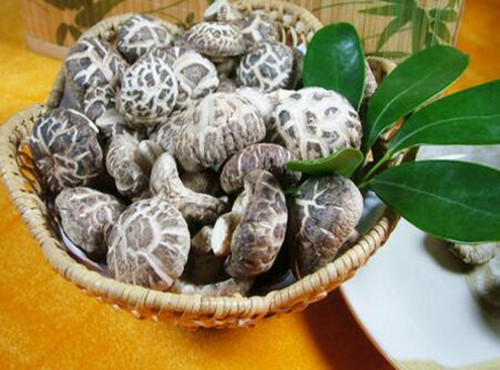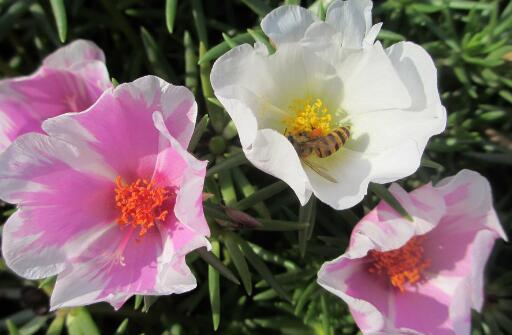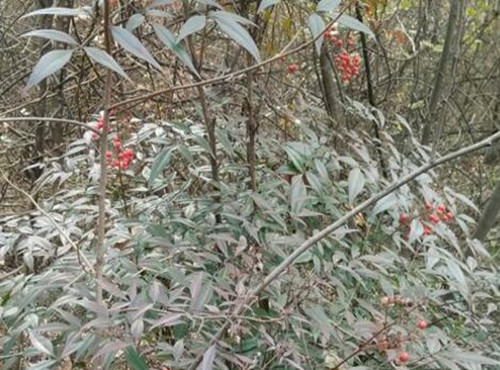Where is the producing area of "Shanzhen" flower mushroom? How to plant it? How much is it per jin? What are the effects and effects?
Pleurotus ostreatus is the star of bacteria, and it is a kind of excellent mushroom produced by the fruiting body of Lentinus edodes in special environment. Its meat is thick, delicate, delicious and tastes refreshing. It is a rookie of edible fungus developed in modern times. So, where is the producing area of mushrooms? How to plant it? How much is it per jin? What are the effects and effects?

Where is the producing area of flower mushroom?
1. Henan Province is a major province of flower mushroom production in China, which is distributed in Xixia County, Nanzhao County and Neixiang County in Nanyang City, Lushi County in Sanmenxia City, and Miyang County in Zhumadian City. Xixia County is the largest shiitake producing area in the country.
two。 Zhejiang: the largest producing area of Flower Mushroom in Zhejiang Province is Lishui area, Qingyuan and Longquan are mainly drying, Lishui, Suichang, Panan and other counties and cities are mainly fresh sales.
3. Fujian: Fujian Province is a major province of Pleurotus ostreatus in China, which has been planted in many counties and cities in the province, but it has decreased significantly in recent years, and the total amount is relatively small in China.
4. Hubei: Hubei Province is one of the main producing areas of flower mushrooms in China, among which the yield and quality of flower mushrooms in Suizhou are better.
5. Shaanxi: Shaanxi Province is a province with large traditional producing area of flower mushroom, but the quantity of mushroom is decreasing year by year, and the bag mushroom has developed rapidly in the past two years.
6. Hebei: Hebei Province has made great progress in recent years, mainly in fresh sales, because it is mainly fresh mushroom sales, which has little impact on dried mushrooms.
How to grow mushrooms?
1. Mushroom shed construction: mushroom planting shed, choose sunny, ventilated, flat terrain, dry soil, convenient to build east-west mushroom shed. The mushroom shed is 6 meters long, 2.6 meters wide and 2.4 meters high. three walls are built at both ends and in the middle of the mushroom shed, with an arc at the end of the wall, with a door 2 meters high and 0.6 meters wide in the middle, and a square exhaust hole with a side length of 12 centimeters above each end door. Bamboo pole is used as the layer, 8 in each layer, with a total distance of 33 cm, with a total of 6 layers, which can put 500 bacterial bags, and the shelf is covered with wide film.
two。 Cultivation time: the average temperature of the day is 26-28 ℃, which can meet the temperature requirements of Lentinus edodes mycelium. After 60-70 days of growth, the mycelium can be full of bags, and then after 10-15 days, the color can be changed. General November mushroom, before the Spring Festival can produce 2 tide flower mushroom, after the Spring Festival out of 1 tide flower mushroom, 1 tide thick mushroom, 1 tide thin mushroom.
3. The preparation of culture material: take 1000 kg of sawdust, 175kg of wheat bran, 2kg of potassium dihydrogen phosphate, 18kg of gypsum powder and 2kg of lime. The PH value of the culture material is 77.5, and the moisture content is 55% 65%. Mix the culture material well and turn the pile 3 times or 4 times.
4. Bagging and sterilization: using large bag cultivation, cut the 25 cm wide low pressure polyethylene plastic tube film into 55 cm long segments, then fasten one end with cotton thread, and then burn it with candlelight to melt into a small ball. Put the culture material into a bag, the material should be loose and tight properly, after loading, tie the mouth with cotton thread and place it on the floor covered with gunny bags. The prepared culture material should be finished within 6-8 hours. Put the material bag into the atmospheric pressure sterilization stove, at the same time, put the coat bag with a seal at one end (58 cm long and 26 cm wide) and skimmed cotton into the steamer, leaving a gap of 20 to 30 cm high in the pot and burning it with high fire, so that the temperature in the pot reaches 100 ℃ in 4 to 6 hours, keep the temperature for 36 hours, open the pot after cease fire, leave the pot when the material temperature drops to 70 ℃, and transport it to the inoculation room.
5. Inoculation: high quality commercial varieties were selected as strains, such as 087, CR-02, L867, Biyang 1, Biyang 3 and so on. The inoculation room should be disinfected beforehand. When the bag temperature drops to 50 ℃, put the bacteria and inoculation tools into the room, then gasify and disinfect each room with 0.5 1 kg formaldehyde for 8 hours, and inoculate when the bag temperature drops below 30 ℃. Put on the outer bag after vaccination. Vaccination is best done in the evening or in the morning. At the time of inoculation, each bag was inoculated with 3 rows, 3 holes in each row, and 1 bottle of bacteria was inoculated into 7-10 bags. 6. Bacteria generation and color conversion: on the 1st to 6th day after inoculation, 6 layers of each stack were closed, the room temperature was not higher than 28 ℃, and the relative humidity was not higher than 70%. On the 7th day, the stack was turned over, and the relative humidity was not higher than 70%. On the 7th day, the stack was turned over, and on the 7th to 14th day, the 5 layers of each stack were kept at a room temperature of 24: 27 ℃, ventilated 2 times a day, for 1 hour each time. On the 15th day, the stack was turned over and the outer bag was loosened to increase oxygen. From day 16 to day 19, keep room temperature 23: 25 ℃ and ventilate 2-3 times a day for 1-2 hours each time. On the 20th day, remove the outer bag and pierce 3-4 holes in the bag around the mycelium with a toothpick, with a depth of about 1 cm, so as not to touch the raw meal. From the 21st to the 29th day, the mycelium between the holes can be connected. At this time, the room temperature should be kept between 22 and 24 ℃, the relative humidity should be below 70%, and the ventilation should be strengthened, the stacking layer should be reduced, and the high temperature burning of the bag should be prevented. On the 30th day, a sweater needle should be used to pierce 5 holes about 2cm deep in the bag around the hole, and the pile should be turned over in time to dissipate heat. On the 40th day, several holes should be pierced with chopsticks. On the 50th ~ 60th day, when there is a tumor-like protuberance on the surface of the bag, the stagnant water in the bag must be discharged in time to make the surface of the bag change color gradually.
6. Buds: move the changed bacterial bags into the mushroom shed, cover the film to warm up during the day, keep the temperature in the shed between 18: 22 ℃ and 85% in 95%; start at 10:00 in the evening, open the mushroom shed for 40 minutes, so that the temperature in the shed drops below 10 ℃, so as to cause a temperature difference of more than 10 ℃ day and night. After continuous treatment for 3-4 days, the hyphae could kink to form primordia. At this time, the temperature in the greenhouse was controlled within the range of 15 ℃-3 ℃, and the primordium was soon transformed into mushroom buds. When the mushroom bud is 0.5 cm in diameter and the bag is slightly pushed up, cut a zigzag hole in the film with a blade in time to let the mushroom bud grow freely from the cut. When the mushroom bud grows to 2 cm in diameter, it begins to cultivate flower mushrooms.
7. Skillfully breeding flower mushrooms: while ensuring that the temperature difference between day and night in the shed is more than 10 ℃ and the air humidity is less than 70%, pay attention to strengthening ventilation and avoiding rain and fog. During the growing period of Pleurotus ostreatus, the film was exposed and ventilated day and night in 1-3 breeze weather; from the diameter of the mushroom bud to the end of harvest, the film was opened during the day and night in sunny days and nights, increasing the temperature difference and ventilation between day and night to promote the formation of mushrooms. In addition, in winter and early spring, uncover the film during the sunny day and let the sun shine directly on the mushroom, which can increase the whiteness and improve the grade of the mushroom. In low temperature weather, cover with film at night.
8. Harvest and processing: the fungus fold of flower mushroom has not yet been fully unfolded, and the suitable time for harvest is when the edge is rolled up to form a gong edge, dried in time after harvest, graded packaging, and stored in a dry place.
9. Raise bacteria and replenish water: after picking a tide of mushrooms, raise the temperature in the shed to 2427 ℃, humidity 75% to 85%, and keep bacteria for 7 days. Replenish the water after raising the bacteria, so that the moisture content of the bacterial bag reaches 50%-55%. Starting from the third replenishment, mushroom nutrients need to be added each time.
How much is the dried mushroom per jin?
The market price of fresh mushrooms is about 612 yuan per jin, and the market price of dried mushrooms is about 60,150 yuan per jin.
What are the effects and functions of flower mushrooms?
1. Improve the immune function of the body: lentinan can improve the phagocytosis of mouse peritoneal macrophages, promote the production of T lymphocytes and improve the killing activity of T lymphocytes.
2. anti-aging: the water extract of Lentinus edodes can scavenge hydrogen peroxide and eliminate hydrogen peroxide in the body to a certain extent.
3. Anti-cancer and anti-cancer: the lid of Lentinus edodes contains double-stranded ribonucleic acid, which will produce interferon with anticancer effect after entering the human body.
4. Lowering blood pressure, blood lipid and cholesterol: Lentinus edodes contains purine, choline, tyrosine, oxidase and some nucleic acid substances, which can not only lower blood pressure, cholesterol and blood lipids, but also prevent arteriosclerosis, liver cirrhosis and other diseases.
5. Lentinus edodes can also treat diabetes, tuberculosis, infectious hepatitis and neuritis, and can also be used for indigestion and constipation.
Time: 2019-03-20 Click:
- Prev

What are the methods and points for attention of sunflower culture in Portulaca oleracea? When will it blossom? What's the moral?
Sunflower, also known as pine leaf peony, half lotus, Portulaca perennial flowers, often for annual cultivation. Like warm, sunny and dry environment, easy to raise and easy to survive. The flowers are of many colors and have light fragrance. What are the methods and matters needing attention in sunflower culture? When will it blossom? What's the moral?
- Next

How much is the price of southern bamboo seedlings? Under what conditions will it turn red? How to grow? How many months to blossom?
South Tianzhu, alias: South Tianzhu, red seed, Tianzhu, red seed, diamond yellow, Tianzhu, orchid bamboo. Because of its beautiful plants, bright fruits and strong adaptability to the environment, it often appears in garden applications. So, how much is the price of southern Tianzhu seedlings? Under what conditions will it turn red? how to grow
Related
- Fuxing push coffee new agricultural production and marketing class: lack of small-scale processing plants
- Jujube rice field leisure farm deep ploughing Yilan for five years to create a space for organic food and play
- Nongyu Farm-A trial of organic papaya for brave women with advanced technology
- Four points for attention in the prevention and control of diseases and insect pests of edible fungi
- How to add nutrient solution to Edible Fungi
- Is there any good way to control edible fungus mites?
- Open Inoculation Technology of Edible Fungi
- Is there any clever way to use fertilizer for edible fungus in winter?
- What agents are used to kill the pathogens of edible fungi in the mushroom shed?
- Rapid drying of Edible Fungi

